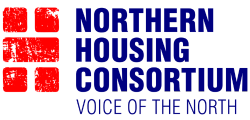Guest Blog – Cloud – it isn’t how big it is, it’s what you do with it that counts
Our lives today are dominated by technology, from smartphones, to social networks, to the IoT, all of which we are now using daily in our places of work – and housing providers are no exception to this trend. As a result, hardly a day goes by without a mention of the need to transform digitally and integrate these technologies. This drive towards digital transformation has been a key factor in the increase in cloud adoption as housing providers look to be more efficient and enable a better experience for both workers, and service users.
However, while initially, cloud computing seemed a simple solution for organisations, it has gradually become more of ‘a complex beast’ that is proving hard to tame. This complexity is only going to increase, with Gartner predicting that more than $1.3tn in IT spending will be directly or indirectly affected by the shift to cloud by 2022. So, despite widespread adoption of cloud, housing providers must ensure investments in cloud are optimised by ensuring they are closely managing their IT infrastructure.
Cloud for clouds sake
The benefit of cloud is that it allows housing providers the ability to innovate more quickly, while also providing a more effective work platform that ultimately saves money. Cloud offers an infrastructure that empowers organisations to have greater agility through the speed at which IT resources can be provisioned. However, it can be a tricky path due to the number of processes that must be followed for successful cloud adoption.
Thomas Trappler, director of software licensing at the University of California, LA, points out that licensing fees are one area that can become increasingly complicated if organisations are unaware of the compliance requirements of cloud. Licensing conditions change depending whether software is on premise or in cloud, and organisations are often aren’t aware of the rules. This means housing providers may find themselves non-compliant without realising there is an issue – highlighting that simply adopting cloud without a plan or understanding of its impact, becomes an exercise in having cloud for clouds sake.
To combat this issue, when taking on the cloud housing providers need to firstly build a robust roadmap that covers every component from implementation to use to ongoing management. This means ensuring that the IT department retains real-time visibility into cloud services running across the organisation. Secondly, this process cannot end after adoption, providers must continue managing and monitoring their cloud environment post-adoption to avoid exceeding consumption estimates and so spending more on unbudgeted cloud resource.
COMPAREX UK’s managed cloud services have been helping housing providers by pinpointing exactly where help is needed when it comes to cloud – from choosing the most appropriate vendor to ensuring the right cloud licenses are in place. You can find out more here.

